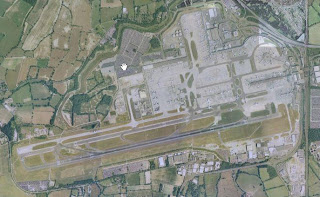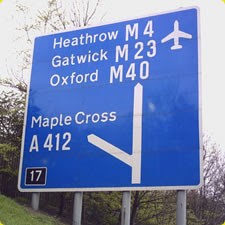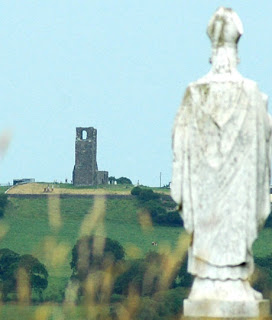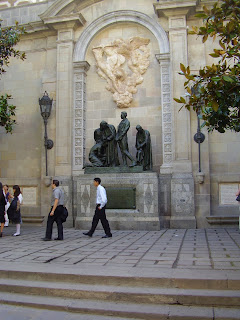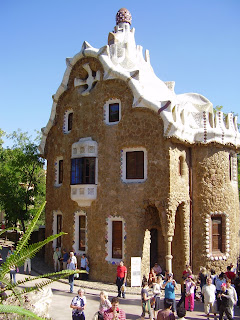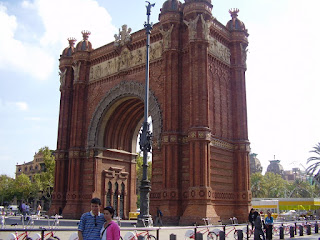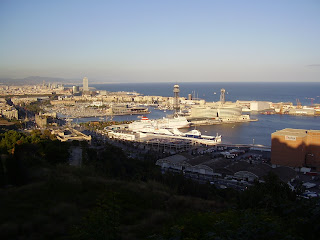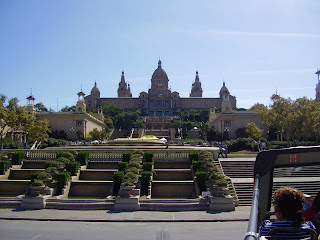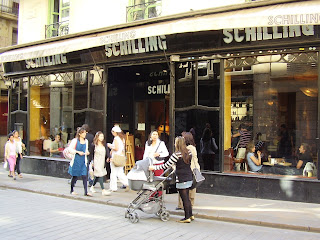
Sir Francis Dashwood
Off then to get rid of the Turkey flab after Xmas on a walk to the top of West Wycombe Hill which contains at its apex two striking structures connected with the Dashwood family of West Wycombe Park, the Dashwood Mausoleum and St. Lawrence’s Church with the striking golden ball on its spire which can hold eight people! As well as a wonderful viewpoint over the Chiltern Hills down to High Wycombe and over the stylised grounds of the Dashwood Mansion West Wycombe Park the car park at the summit is a good starting point for walks in the Chilterns.
These walks take you through the countryside estates of West Wycombe, Bradenham and Hughenden where there are fantastic views, magnificent beech woods and carpets of bluebells and wild flowers. You can see places of great architecture and historic interest and wildlife such as red kites and muntjac deer.
http://www.chilternsaonb.org/site_details.asp?siteID=391
Today we headed down from the summit to the West Wycombe Caves which housed the notorious Hell-Fire Club and then on to the National trust village of West Wycombe. West Wycombe Hill has views and access to caves of the Hell Fire Club, Dashwood family mausoleum and West Wycombe Park. West Wycombe is a small village three miles due west of High Wycombe in Buckinghamshire, England and is the home of the West Wycombe Caves and the Italianate West Wycombe Park - a stately home accompanied by 5000 acres (of land which was built upon in the mid 18th century by Sir Francis Dashwood, founder of the Dilettanti Society and co-founder of the Hellfire Club which was held within the caves. They were a natural formation which was excavated in the 1750s by Sir Francis Dashwood to give work to the local community, straighten the road to London and to provide him with a private meeting place for members of the secretive Hellfire Club to meet.


Dashwood Mausoleum
The 18th century Church of St. Lawrence, with its golden ball on the top of the hill, is a well-known landmark, visible for many miles due its hilltop location, visually dominating the village. The ball can seat up to eight people and gives a panoramic view of the area. The church was remodelled by Sir Francis Dashwood inside and out and it has a spectacular ornate painted interior. The hill is known as 'West Wycombe Hill' and was an Iron Age hill fort. Also situated on the hill is the hexagonal flint and stone Dashwood Mausoleum, inspired by the Arch of Constantine in Rome. The Dashwood Mausoleum near the church was built in 1765. It is a vast hexagonal monument built of Portland stone and flint. It is the final resting place for members of the Dashwood family and the urns are meant to contain the hearts of the members of the Hell-Fire Club.

St. Lawrence Church
The West Wycombe Caves were a natural formation which was excavated in the 1750s by Sir Francis Dashwood to give work to the local community, straighten the road to London and to provide him with a private meeting place for members of the secretive Hellfire Club to meet. His aim was to provide an extraordinary addition to his landscape gardens, no doubt inspired by his Grand Tours of Europe and the Ottoman Empire. Many of his fellow dilettantes were building great Estates and landscaping gardens and temples above ground but no others dared venture underground in this way. The chalk was used to build the main road from West Wycombe to High Wycombe. This also provided employment to the Villagers of West Wycombe following a succession of harvest failures. The achievement is a true feat of engineering and quite remarkable considering they were all dug by hand. You can still see the individual pick axe marks on the walls.
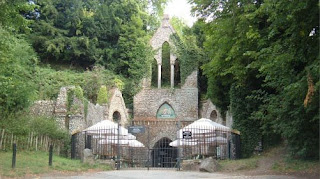
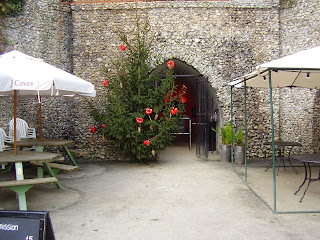
Wycombe Caves Entrance
On entering the Caves, long winding passages lead deep underground for over half a mile, through the great Banqueting Hall and past various chambers. In these you will find scenes with various members of the Hellfire Club. The final destination is the Inner Temple which is reached by crossing the River Styx. You are now several hundred feet below the Church on top of the hill.
The largest cavern in the caves is known as the “Banqueting Hall”. This cavern is 40 feet in diameter; it is about 1,000 feet from the entrance and about half way down the caves. It lies a short distance to the East of the Mausoleum. In the ceiling is a hook from which a lamp was hung in the 18th century. The compass-like design of the Hall with its four niches is clearly symbolic. The statues are from Italy. After its restoration in 1973, one of the first visitors, Mr Brooks of High Wycombe, found a lump of chalk embedded with coins dated from 1720 to 1754. This suggests that work was proceeding on the site to provide foundations for the houses which Sir Francis was building in the village before the 1748 excavation began.

Banqueting Hall

The splendid flint entrance was designed to look like a Gothic church to be seen from West Wycombe Park which is across the valley. It must have been built after 1752, when the new road from West Wycombe to High Wycombe (the A40) was finished. A stone pedestal, which still stands, was erected at the junction of this road and the Aylesbury road (the A4010) to record the event. The inscription in Latin on one side reads: “erected by Sir Francis Dashwood in 1752” and on the other side: “Oxford 22 miles, Aylesbury 15 miles, City 30 miles”.

Tearoom, West Wycombe Caves
The house itself is among the most theatrical and Italianate in England, its façades formed as classical temples. The interior has Palmyrene ceilings and decoration, with pictures, furniture and sculpture dating from the time of Sir Francis. The lavishly decorated house has featured in many recent films and television series, including The Importance of Being Earnest and Vanity Fair.

Drawing Room
%5B1%5D.png)

West Wycombe Park
The Palladian house was built in the early part of the 18th Century by Sir Francis Dashwood the Premier Baronet of Great Britain. The Dashwood family still live in the mansion, it is now the home of Sir Edward Dashwood Bt., the 12th Premiere Baronet of Great Britain. The 11th Baronet, Sir Francis Dashwood, devoted much of his life to restoring West Wycombe house and grounds to the glory of its original design.
The main features of the grounds at West Wycombe are relics of the artificial Rococo style, offering an enticing mixture of water and solid ground which provide straight avenues, serpentine streams and winding paths in the woods. The Temple of Music and the many other follies at West Wycombe were inspired by travels of the first Premier Baronet all around the world. Various countries, but especially the classical structures of ancient Greece, Rome and the Mediterranean area are reflected here. Not all of the follies were built just for looks; the Temple of the Four Winds was originally constructed to supply water to the park via a complex system of waterwheels and pumps. The temple also sits on top of the estates icehouse now long since redundant and forgotten. This structure was where ice was gathered from the lake and river during the winter months and stored to act as a rudimentary fridge freezer during the warmer months, this system of food storage actually worked surprisingly well in the days before electricity and refrigerators.
The park still contains many follies and temples. The "Temple of Music" is on an island in the lake, inspired by the Temple of Vesta in Rome. It was designed for Dashwood's fêtes champêtres with the temple used as a theatre; the remains of the stage survive. Opposite the temple is the garden's main cascade which has statues of two water nymphs. The present cascade has been remade, as the original was demolished in the 1830s. An octagonal tower known as the "Temple of the Winds" is based in design on the Tower of the Winds in Athens.
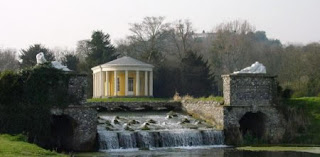
Temple of Music

The Temple of Apollo was originally a gateway and later used for cock fighting
West Wycombe village was sold to the National Trust in 1929 by the Dashwood family to raise cash following that year's Wall Street Crash. The village is rare in its architecture, with cottages and inns dating from the 16th to 18th centuries. The hill, with its fine views, is surmounted by an Iron Age hill fort and is part of the original landscape design of West Wycombe Park. It is now the site of a church and the Dashwood Mausoleum. The village centre, despite being on a main road (the A40), retains much of its historical charm, and being National Trust-owned for the main part, has resisted modernisation. The High Street consists of a number of 'old-fashioned' shops (in appearance at least), as well as three pubs, some small offices and a well-utilised village hall.

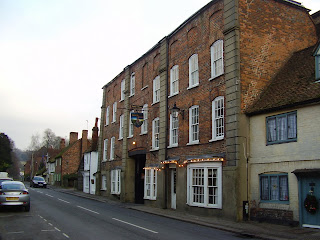
George & Dragon Inn

West Wycombe Village
On his return from his travels on the continent Sir Francis established the famous Hell-fire Club which subsequently held chapter meetings in the Caves and whose members included Lord Sandwich, John Wilkes and other senior aristocrats and statesmen. Sir Francis later became Chancellor of the Exchequer. Benjamin Franklin was a close friend and visited West Wycombe often.

Inner Temple - The members of The Hell-Fire Club
Sir Francis Dashwood was succeeded by his son, Sir George was to become the Whig Member of Parliament for Wycombe for 31 years and supported, in opposition to his Tory father, who had been an MP for 37 years, the Great Reform Act of 1832, the repeal of the Corn Laws in 1846 and Catholic Emancipation. West Wycombe and its surroundings are a lasting memorial to the Dashwood family and are even more remarkable that the family connection is maintained to this day. It is well worth a visit for the many places to see and for the superb setting in this very fine part of England just off the M40 and as the plaque on the entrance to the caves attests, just 30 miles from the City of London.

River "Styx"
Today, West Wycombe Park serves a combined role of public museum, family home, and film set. During the summer months, the paying public can tour the ground floor room to view the architecture and the antique contents of the house still owned by the Dashwoods, many of which have been re-purchased and restored to the house by Sir Francis Dashwood, 11th Baronet, in the late 20th century, following their dispersal during the various sales of the 19th and early 20th centuries.
The present head of the Dashwood family, Sir Edward Dashwood (born 1964), lives in the mansion with his wife and three young children. Sir Edward runs the estate and house as a commercial concern, in order that the entire estate can be retained and maintained. The house is frequently let out as a filming location, and, in addition to agricultural enterprises, there is a large pheasant shoot with paying guns.
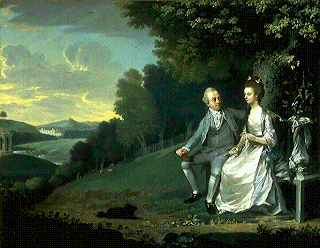
The Dashwoods of West Wycombe with the House and Grounds














